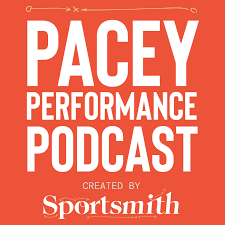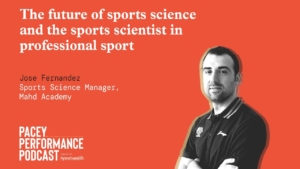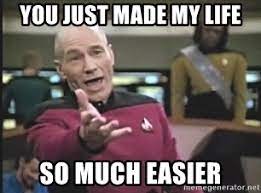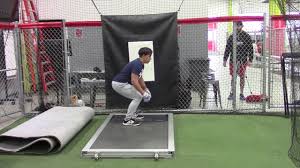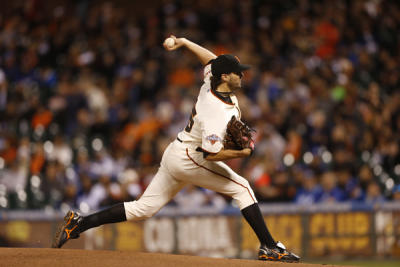Pacey Performance Podcast REVIEW- Episode 379 Jose Fernandez
This blog is a review of the Pacey Performance Podcast Episode 379 – Jose Fernandez
Jose Fernandez
Jose is the leader of Sports Science at the Mahd Academy in Saudi Arabia, and was Head of Sports Science at Major League Baseball’s Houston Astros for five years prior to that.
? Listen to the full episode with Jose here
Discussion topics:
What kind of things were you most proud of in the five years in your previous role with the Houston Astros?
”Creating an infrastructure able to support some of the decision making, which is not just the decision making with regard to strength & conditioning which is what we usually think of. When it comes to sport science we think of collecting data in the weight room, collecting external load and internal load data. I think my work reached a little bit beyond just the traditional understanding of sport science to influence the way we were recruiting players for example, and how we help our scouting department with some of the decision making because at the end of the day we are using very similar technology and collecting very similar data, and we can help them go through those processes in a little more objective way and support those decisions.
It starts from taking it slowly and going step by step and showing value in any way you can. At the end of the day there are two things you need to achieve; one is to influence in your work performance and the other is injuries and try to keep the players healthy and try to win more games or perform better. The other part is make the life of the coaches that are working with you easier. You are helping them save time, make better decisions and things like that.
Once you are able to help them at the early stages and they feel like you are not just there to say- this is what we are doing now, we are collecting this data and now you have to change your training because this technology is now saying this number is red instead of green.”
Can you give an example of how you made it easier for the coaching team?
”When I first arrived there wasn’t much in the way of objective data to help describe training or help evaluate where the players were getting better or maintaining certain adaptations during the season or not. So my first goal was to profile the players in very simple ways. The way I look at athlete profiling I try to think of it in terms of three different buckets.
- Aerobic fitness
- Force (max force) but also force x time (Power related capabilities)
- Speed (change of direction and acceleration)
I think those three buckets are not just important for my sport but probably universal for most sports and then you can customise a little bit based on your environment and where you are actually working. When I think about those three buckets I feel that in most sports we are going to be able to prescribe training programmes with that information. I think that in most sports Aerobic fitness and especially force and power are going to be in some way related to performance on the field or court. I’m not saying that if you are stronger you are going to score more but when you look at the sport from certain actions there are certain things that start to correlate – ability to change direction, ability to be explosive in certain actions -throwing a ball at 100 mph, swinging the bat with certain power.
The second part is that, especially if you are working in North American sports where the schedules are very dense and heavy, usually the players that are stronger and aerobically fitter are the ones that are going to cope better with that stress; the ability to recover faster between high intensity efforts, and even from game to game.
So let’s go into how I collect the data. For aerobic fitness I usually look at an intermittent field assessment- usually a 30-15 or a yo-yo IRT and usually I like to do that at least once per quarter so somewhere between 8 and 12 weeks get an update on that.
For strength and power this is interesting because a lot of people say, the schedule is so heavy, you play 162 games I am not going to bring the players up to anywhere near maximal loads. From a philosophy point of view I actually like to bring them up to near max load load every 4-6 weeks because when you actually break down the schedule there are plenty of opportunities to load the players- the schedule and the games are not the same. In a week we are going to be bringing the players up to anywhere between 2 and 4 reps with a barbell speed of somewhere between 0.1 and 0.3 m/s. Right there you are automatically going to have a repetition maximum estimation. This is part of training, this is not an actual assessment.
I am more interested in the training adaptations from one training cycle to the next training cycle, rather than going day by day or even week by week because at the end of the day I’m not thinking about fatigue changes, I’m thinking about adaptations to training.
With force plates you can also look at more specific force profiling based on specific positions that the players are actually doing on the field. So for example, you can do an isometric squat assessment on the force plates at specific knee angles that are somewhat specific to what the baseball player is doing on the field, and understand what forces they are producing in terms of peak force and RFD. Then you can compare that with two things; with what they are doing in a dynamic movement in a jump type assessment, a power related assessment. The other thing you can do is collect very granular data on players performing sporting actions at a very high intensity level, with force plates on the mound.
So immediately you can compare whether a player is able to express certain levels of force physically in an isolated movement which has nothing to do with their sport and then you bring that player into a specific motion at a high intensity and you are able to compare if there are any deficiencies there as that will give you a clue if there is a technical fault or whether the player is not physically ready to create certain levels of force. So now you can start giving advice on whether to work from a technique correction point of view or whether this is purely an output problem that we have to develop in the weight room, for example.
Most people are doing very similar assessments but it is that research that you do in the background to try to filter a little bit the noise within the force plates and try to understand what are the metric that are more important for your specific environment. For a point guard in basketball it might be this and this metric because this is important for what they have to do on the court and for a baseball player it might be two or three other metrics.
For speed, in baseball we used to use a 30 Yard dash as that is specific to first base distance, and use speed gates to get the splits for acceleration and top speed. You can elaborate more on top with video analysis and more specific technique type assessments with 1080 and computer vision etc.
I want to be very clear that it is not so much about testing; it’s that as part of training we are sprinting, as part of training we are doing max strength, as part of training we are doing aerobic fitness type of sessions – well let’s find opportunities to measure that objectively and update our database with the information so that if a player gets hurt we have specific benchmarks and if we have to make specific adjustments we can go back and see what the player has been doing.”
With the stress that is on the upper specifically in baseball was there any sort of profiling that would happen in that area?
”Yes there is. The three buckets that I mentioned are more performance based. When it comes to prevention we can be a little more granular. So for us in baseball it’s shoulders, elbows and hamstrings. We were looking at a couple of isometric strength assessments with a couple of options- shoulder external and internal rotation strength balance and maximal outputs and then we have the ASH test with force plates to look at RFD for the shoulder.
It’s a lot more important for pitchers because of what they have to do in every single game so then we will try to pair that data collection with when they have to pitch and get an idea of how they are recovering from games and if there is anything we can do to adjust and prepare for the next outing.”
What do think about wearable technology and some of the trends now to monitor things outside of your training sessions?
”If you work in a very complex environment when you have one or two coaches for 30 or 35 players, how much can you use 24 hours of information from many of those players and make changes on a daily basis? So that’s why I am going for very basic buckets for athlete profiling and just focus on simple things that can guide your training process and help you understand if your athletes are getting better from training cycle to the next one.; rather than trying to optimise 99% your recoverability from one day to the next, as that is something that is going to be really hard to do in professional sport environments.”
Top 5 Take Away Points:
- Show value to coaches in any way you can – make the life of the coaches that are working with you easier
- Keep your athletic profiling simple – three buckets – aerobic fitness, force and speed
- Use specific tests to answer specific questions – is it technical fault or the player is not physically ready to create certain levels of force?
- When it comes to prevention we can be a little more granular. So for us in baseball it’s shoulders, elbows and hamstrings.
- Keep it simple – just focus on simple things that can guide your training process and help you understand if your athletes are getting better from training cycle to the next one.
Want more info on the stuff we have spoken about?
You may also like from PPP:
Episode 372 Jeremy Sheppard & Dana Agar Newman
Episode 217, 51 Derek Evely
Episode 207, 3 Mike Young
Episode 192 Sprint Masterclass
Episode 87 Dan Pfaff
Episode 55 Jonas Dodoo
Episode 15 Carl Valle
Hope you have found this article useful.
Remember:
- If you’re not subscribed yet, click here to get free email updates, so we can stay in touch.
- Share this post using the buttons on the top and bottom of the post. As one of this blog’s first readers, I’m not just hoping you’ll tell your friends about it. I’m counting on it.
- Leave a comment, telling me where you’re struggling and how I can help
Since you’re here…
…we have a small favor to ask. APA aim to bring you compelling content from the world of sports science and coaching. We are devoted to making athletes fitter, faster and stronger so they can excel in sport. Please take a moment to share the articles on social media, engage the authors with questions and comments below, and link to articles when appropriate if you have a blog or participate on forums of related topics. — APA TEAM

